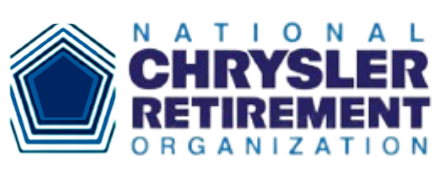For retirees and older adults, understanding these changes is key to improving sleep quality and overall well-being. The National Chrysler Retirement Organization’s Aging Information Committee is here to help you navigate these shifts and provide practical tips for better rest.

How Aging Affects Sleep
Several factors contribute to sleep changes as we grow older, including:
1. Altered Sleep Architecture
- Older adults spend less time in deep sleep (slow-wave sleep) and REM sleep, which are crucial for memory, restoration, and mood regulation.
- More time is spent in lighter sleep stages, making it easier to wake up during the night.
2. Changes in Circadian Rhythm
- The body’s internal clock shifts, causing many seniors to feel sleepy earlier in the evening and wake up earlier in the morning.
- Reduced exposure to natural light and decreased activity levels can further disrupt sleep-wake cycles.
3. Increased Sleep Disorders
- Conditions like insomnia, sleep apnea, and restless legs syndrome (RLS) become more common with age.
- Chronic pain, arthritis, and medications can also interfere with restful sleep.
4. Hormonal Changes
- Declining levels of melatonin (the sleep hormone) make it harder to fall and stay asleep.
Tips for Better Sleep as You Age
While some sleep changes are inevitable, adopting healthy habits can significantly improve sleep quality. Here are evidence-based strategies to help you rest better:
1. Stick to a Consistent Sleep Schedule
- Go to bed and wake up at the same time every day, even on weekends.
- A regular routine helps regulate your body’s internal clock.
2. Optimize Your Sleep Environment
- Keep your bedroom cool, dark, and quiet (around 65°F is ideal).
- Invest in a comfortable mattress and pillows that support your body.
- Consider using blackout curtains, white noise machines, or earplugs if needed.
3. Limit Daytime Naps
- If you nap, keep it short (20-30 minutes) and avoid late-afternoon naps.
4. Stay Active During the Day
- Regular exercise (such as walking, swimming, or yoga) promotes deeper sleep.
- Avoid vigorous activity close to bedtime, as it can be stimulating.
5. Watch Your Diet and Hydration
- Avoid caffeine, alcohol, and heavy meals before bed.
- Limit fluids in the evening to reduce nighttime bathroom trips.
6. Manage Stress and Relax Before Bed
- Practice deep breathing, meditation, or gentle stretching to unwind.
- Try reading a book or listening to calming music instead of screen time.
7. Get Sunlight Exposure
- Spend time outdoors in natural light, especially in the morning, to help regulate your circadian rhythm.
8. Talk to Your Doctor About Sleep Issues
- If you snore loudly, gasp for air, or experience excessive daytime sleepiness, you may have sleep apnea and should seek medical advice.
- Review medications with your doctor, as some can interfere with sleep.
Conclusion
Aging may change how we sleep, but that doesn’t mean you have to accept poor rest. By understanding these shifts and adopting healthy sleep habits, you can enjoy more restful nights and energized days.
The National Chrysler Retirement Organization’s Aging Information Committee is dedicated to helping retirees live healthier, happier lives. For more resources on aging well, visit our website or contact us today!
Did you find these tips helpful? Share this article with fellow retirees to help them sleep better too!
By following these guidelines, retirees can take proactive steps toward better sleep and enhanced quality of life. Sweet dreams! 🌙
...with Edits and Modifications
AGING INFORMATION COMMITTEE BLOG
Aging in Place on a Budget: Navigating Cost-of-Living Increases Over the Next 5 Years
For many retirees, “aging in place” is more than a preference—it’s a goal. It means staying in your own home and community, surrounded by familiar …



















